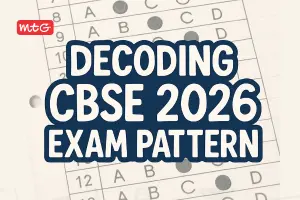
NCERT class 6 mathematics chapter 9 – “Data Handling” teaches how can arrange some data to extract useful information. It teaches about data, which is a collection of numbers gathered to give some information. Students should practice multiple-choice questions (MCQs) to prepare for the objective questions that will be asked in the CBSE exams. For the CBSE exams, practice multiple-choice questions (MCQs) to prepare for the objective questions. We have offered Class 6 MCQ Questions on “Data Handling” apart from offering comprehensive explanations. On many occasions, CBSE highlighted the role of MCQs as they play a major role in understanding the concepts thoroughly.
MCQs are quite different from subjective questions. Therefore, students should practice and understand how to find the right answers in the MCQs. To revise the main concepts, students should practice all the MCQs with the answers given. This will assist them in familiarizing with the kinds of questions that might appear in the board exams.
Previous – Decimals Class 6 MCQS With Answers
Check the updated Syllabus – CBSE Class 6 Maths Syllabus 2024-25
Topics covered in “Data Handling”
- Recording Data
- Organisation of Data
- Tally Marks
- Pictograph
- Interpretation of a Pictograph
- Drawing a Pictograph
- A Bar Graph
- Interpretation of a Bar Graph
- Drawing a Bar Graph
Check complete class 6 Maths MCQ – Class 6 Mathematics MCQs with Answers
CBSE Class 6 Mathematics Data Handling MCQs – PDF Download
Answers –
Summary for NCERT class 6 mathematics chapter 9 – “Data Handling”
- We have seen that data is a collection of numbers gathered to give some information.
- To get a particular information from the given data quickly, the data can be arranged in a tabular form using tally marks.
- We learnt how a pictograph represents data in the form of pictures, objects or parts of objects.
- We have also seen how to interpret a pictograph and answer the related questions.
- We have drawn pictographs using symbols to represent a certain number of items or things.
- We have discussed how to represent data by using a bar diagram or a bar graph.
- In a bar graph, bars of uniform width are drawn horizontally or vertically with equal spacing between them. The length of each bar gives the required information.
- We also discussed the process of choosing a scale for the graph.
- We have also practised reading a given bar graph. We have seen how interpretations from the same can be made






























